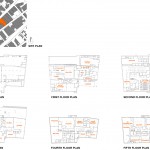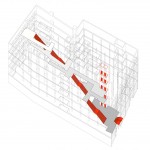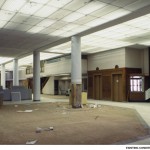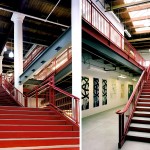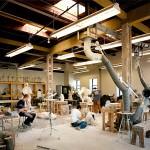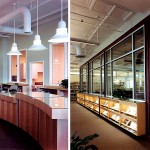Maine College of Art
Project Name: Maine College of Art
In 1993, Maine College of Art purchased the former Porteous department store in Portland, Maine with the goal of uniting and centralizing studio, classroom, and administration facilities scattered in at least four separate buildings. In a multi-phase adaptive use project spanning twenty years, an abandoned 150,000 SF building has been transformed into a vibrant “campus” for an urban art college.
The designers first developed an overall plan that allocated functions to general zones in the building. Then, detailed designs were created as funds became available. Facilities completed include classrooms; studios (for painting, sculpture, metalsmithing, ceramics, printing, textile design, drawing, photography, graphic design, etc.); a science laboratory; a foundry; a kiln room; computer laboratories; and offices for administration and admissions. Also, the building’s terra cotta façade was restored and listed on the National Historic Register.
In general, the architecture defers to the character of the original building, creating a framework, or armature, to be completed over time by occupants and evolving programs. However, a few signature uses were designed as completely finished spaces. These include the art gallery, the lecture room, a combined cafeteria and student lounge, and the library. In the library, the original windows and their glass block transoms bounce natural light off the restored tin ceiling and deep into the space.
The entire facility is knitted together by a central stair that runs from the entry lobby up to the fifth floor, where the landing looks out to Casco Bay. Along the way, the angled stair creates spaces for teaching, chance interaction, and display. Daylight cascades down from a skylight, and multiple, continuous sight lines along the entire stair open up the middle of the building, breaking down the insularity of the separate floors. The stair quickly became the “Main Street” of the building, and recently, it was one of the inspirations for the College’s new logo.
During initial planning, the designers prepared a comprehensive analysis of projected energy use and possible energy conservation measures. At the completion of the first phase of construction (the renovation of the entrance, the main stair, and the completion of the fourth and fifth floors), the building received one of the first Energy Star designations by the U. S. Environmental Protection Agency. More important, however, is that a significant building has been given new life; not only did this renovation reinvigorate the College, it also helped spark the revival of Portland’s downtown.


